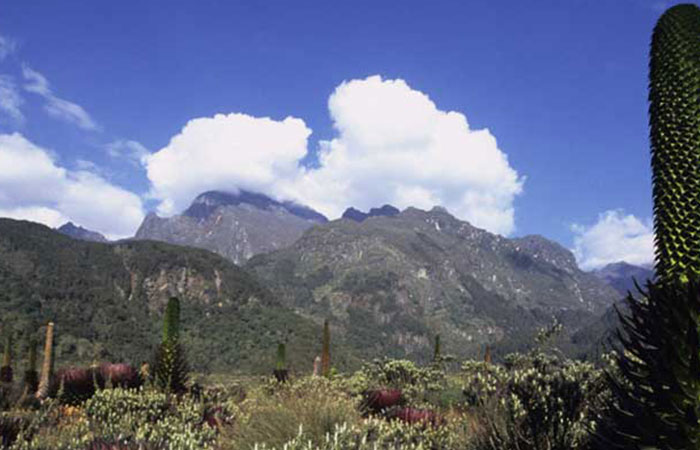In the Great East African Rift Valley, on the western side of Uganda, is Rwenzori National Park, which straddles Virunga National Park of the Democratic Republic of Congo. Rwenzori Mountain was named after the legendary Mountains of the Moon that are snow-capped and believed to have glaciers, making it one of the sources of the world’s longest river, the River Nile.
Location and accessibility
Rwenzori Mountains National Park is located in the districts of Kabarole, Kasese, and Bundibudyo and in the counties of the Democratic Republic of Congo. The park can be accessed via Kasese or Fort Portal, which is a 5-7 hour drive from Kampala. The park can also be reached by plane from Entebbe International Airport or Kanjansi Airstrip to Kasese or Fort Portal Airstrip, later transferring by road to the park.
Background
The word Rwenzori came from a local word, “Rwejura,” which means rainfall, because of the snow-capped peaks; the area receives a lot of rainfall all year round. Therefore, this makes the slopes of the mountains fertile, thus enhancing agriculture in the area. The national park was gazetted in 1991; later, in 1994, it was recognized by UNESCO as a World Heritage Site, and later, in 2008, it became a RAMSAR site.
Mountain Rwenzori National Park is a conservation area with the status of a UNESCO World Heritage Site because of the unique flora and fauna, like the plant flowers and the beautiful lobelias, plus waterfalls, glaciers, and a lot of other attractive mountainous vegetation. The presence of these glaciers, snowfields, and waterfalls has made the park one of the most attractive Alpine areas around the world. The park zones are well dotted with flowers and a couple of plants that have unique colors because of the environmental conditions; the ecological value is very awesome.
Animal species
This national park hosts over 70 species of mammals plus 217 species of birds, and 17 of them can only be found in Rwenzori. 19 are the Albertine Rift Valley epidemics, which justifies UNESCO labeling it a key birding area, and also the rare type of vegetation, including the beautiful lobelias.
At about 1800 meters, one can view a variety of bird species like the handsome francolin, Rwenzori turaco, long-eared owl, barred long-tailed cuckoo, cinnamon-chested bee-eater, strange weaver, Archers’ robin-chat, Rwenzori batis, white-starred robin, montane sooty boubou, slender-billed starling, Lagden’s bush shrike, blue-headed sunbird, barbets, golden-winged sunbird, greenbuls, IIladopsis, Apalises, crimson wings, and flycatchers.
Main park activities are bird watching, hiking, nature walks, and primate walks. While on your primate walk safari, spot a number of primates like the chimpanzees and other monkeys. Cultural tours are of value in the area because of the mixed culture of Butooro, Bamba, and Bakonjo, each showcasing a unique travel experience.
Visiting the local communities is an opportunity to witness the locals at the foothills of the mountain of the moon carrying out their cultural lifestyles and activities like cultural dances, and if you are lucky, you might even get some lessons on drumming and dancing. You will also visit the Ruboni village, where you will learn about the lifestyles of the old forefathers of the Mountains of the Moon.
About Rwenzori Mountain
Mount Rwenzori is the third-highest mountain in Africa, rising up to 16,710 feet above the sea, and the highest peaks are permanently snowcapped. Margherita Peak is the highest peak in the ranges, making it the 3rd highest peak in Africa together with its twin peak, Mount Stanley, which is within the park.
The 4th and 5th highest peaks, Mount Speke and Mount Baker, are also within the park. The mountain ranges were first brought to the world’s notice in CE 150 by Alexandrian geographical researcher and photographer Ptolemy, when he described a stunning mountain that he christened “mountain of the moon.” Later in 1899, English explorer Henry Morton Stanley was as spellbound as Ptolemy when he beheld the ranges and renamed them the “Cloud Mountains.”

